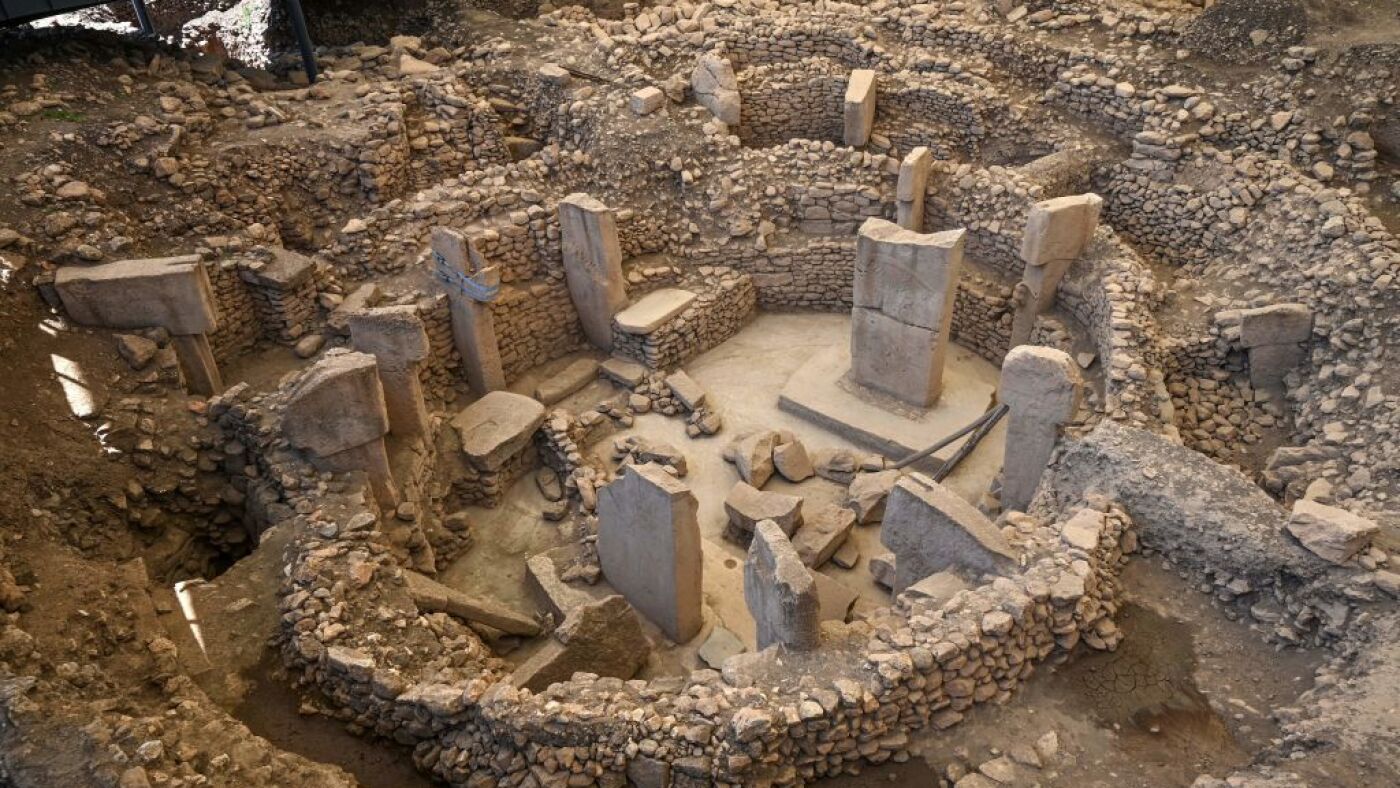

Columns are seen at the archaeological site of Gobekli Tepe in Şanlıurfa, Turkey, in May 2022. Located on a rocky hill in southeastern Turkey, overlooking the ancient Mesopotamian plateau, Gobekli Tepe is the world’s first known sanctuary and possibly the world’s oldest solar calendar.
Ozan Kossi/AFP via Getty Images
Hide caption
toggle caption
Ozan Kossi/AFP via Getty Images

Columns are seen at the archaeological site of Gobekli Tepe in Şanlıurfa, Turkey, in May 2022. Located on a rocky hill in southeastern Turkey, overlooking the ancient Mesopotamian plateau, Gobekli Tepe is the world’s first known sanctuary and possibly the world’s oldest solar calendar.
Ozan Kossi/AFP via Getty Images
Hide caption
toggle caption
Ozan Kossi/AFP via Getty Images
At first glance, the V-shaped symbols carved into the columns at Göbekli Tepe, an archaeological site in southern Turkey, do not seem very significant compared to the animal figures next to them depicting the cycles of the sun and moon.
But according to researchers, these marks may be evidence of two major discoveries: The ancient column may be the world’s oldest lunisolar calendar, and it may serve as a memorial to a comet strike that hit Earth about 13,000 years ago and caused a mini ice age.
“The people of Gobekli Tepe appear to have been keen sky watchers, which is to be expected given that their world was destroyed by a comet strike,” said Martin Sweatman, a scientist at the University of Edinburgh who led the research team that made the latest discovery.

Results, Published Last month in Time and mindSome studies suggest that a series of V-shaped symbols are carved into the pillars at Göbekli Tepe, each representing a single day. When put together, they appear to record the date when a swarm of comet fragments struck the Earth in 10,850 B.C., triggering a 1,200-year ice age that led to the extinction of many large animals, including mammoths, steppe bison, and other large mammals in the Pleistocene.
“This event may have sparked civilization by creating a new religion and stimulating developments in agriculture to deal with the cold climate,” Sweetman said.
The possibility of a comet impacting Earth has long been a source of fascination and controversy among scientists. If the V-signal hypothesis is correct, it could provide groundbreaking support for this hypothesis.
“It is likely that their attempts to record what they saw were the first steps towards the development of writing thousands of years later,” he added.

“Web maven. Infuriatingly humble beer geek. Bacon fanatic. Typical creator. Music expert.”





More Stories
Scientists confirm that monkeys do not have time to write Shakespeare: ScienceAlert
SpaceX launches 23 Starlink satellites from Florida (video and photos)
A new 3D map reveals strange, glowing filaments surrounding the supernova